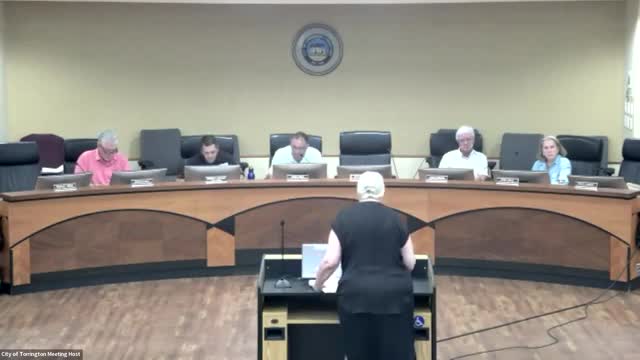Community leaders raise urgent questions on shelter regulations
July 08, 2024 | Torrington, Northwest Hills County, Connecticut

This article was created by AI summarizing key points discussed. AI makes mistakes, so for full details and context, please refer to the video of the full meeting. Please report any errors so we can fix them. Report an error »

During a recent government meeting in Torrington, Connecticut, community leaders and stakeholders gathered to discuss proposed regulations regarding temporary and permanent shelter facilities. Julie Scharnberg, vice president of community engagement for the Northwest Connecticut Community Foundation, expressed her uncertainty about the proposed changes, citing numerous questions about the new definitions and their implications for existing cold weather shelter operations. She emphasized the need for clarity, particularly regarding the adequacy of off-street parking provisions and the selection criteria for zones requiring special exception approvals.
Deirdre DeCara, executive director of Fish Friends in Service to Humanity, highlighted the importance of consulting with organizations that operate shelters, noting their rigorous oversight by the Department of Housing and the Connecticut Coalition to End Homelessness. She shared insights from her experience managing a 35-bed shelter, emphasizing the need for practical guidelines based on real-world experiences, especially in light of the COVID-19 pandemic.
Concerns were raised about the proposed 500-foot distance requirement for shelters from schools and parks, with some questioning the rationale behind this measure compared to other jurisdictions. The discussion also touched on the impact of these regulations on existing shelters, particularly regarding their ability to expand and serve the growing number of families and seniors facing homelessness.
Several attendees urged the commission to consider the human aspect of homelessness, particularly the needs of families with young children, who are increasingly at risk of homelessness. Lisa Candles from EdAdvance emphasized the importance of community involvement in shaping these regulations, suggesting that more public input could lead to better outcomes.
The meeting underscored the complexities of addressing homelessness in Torrington, with participants advocating for a balanced approach that considers both community safety and the needs of vulnerable populations. As discussions continue, stakeholders are calling for transparency and collaboration to ensure that any new regulations effectively support those experiencing homelessness while maintaining community standards.
Deirdre DeCara, executive director of Fish Friends in Service to Humanity, highlighted the importance of consulting with organizations that operate shelters, noting their rigorous oversight by the Department of Housing and the Connecticut Coalition to End Homelessness. She shared insights from her experience managing a 35-bed shelter, emphasizing the need for practical guidelines based on real-world experiences, especially in light of the COVID-19 pandemic.
Concerns were raised about the proposed 500-foot distance requirement for shelters from schools and parks, with some questioning the rationale behind this measure compared to other jurisdictions. The discussion also touched on the impact of these regulations on existing shelters, particularly regarding their ability to expand and serve the growing number of families and seniors facing homelessness.
Several attendees urged the commission to consider the human aspect of homelessness, particularly the needs of families with young children, who are increasingly at risk of homelessness. Lisa Candles from EdAdvance emphasized the importance of community involvement in shaping these regulations, suggesting that more public input could lead to better outcomes.
The meeting underscored the complexities of addressing homelessness in Torrington, with participants advocating for a balanced approach that considers both community safety and the needs of vulnerable populations. As discussions continue, stakeholders are calling for transparency and collaboration to ensure that any new regulations effectively support those experiencing homelessness while maintaining community standards.
View full meeting
This article is based on a recent meeting—watch the full video and explore the complete transcript for deeper insights into the discussion.
View full meeting
